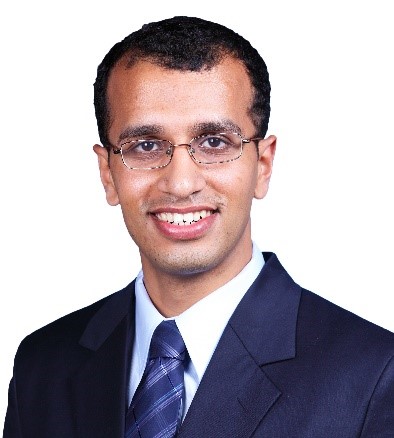ChE Seminar: Dr. Gautam G. Yadav
| Event Date: | September 17, 2019 |
|---|---|
| Speaker: | Dr. Gautam G. Yadav |
| Speaker Affiliation: | City University of New York |
| Time: | 3:00-4:15 pm |
| Location: | FRNY G140 |
| Open To: | Attendance required for PhD students |
| Priority: | No |
| School or Program: | Chemical Engineering |
| College Calendar: | Show |
 Dr. Gautam G. Yadav
Dr. Gautam G. Yadav
Director of Advanced Battery Development
Urban Electric Power (UEP) Inc.
Part of the Fall 2019 Graduate Seminar Series
Engineering an Aqueous Energy Dense Manganese Dioxide|Zinc Battery to Challenge Lithium- Ion’s Dominance
Abstract
The current landscape of energy storage systems is dominated by lithium-ion batteries because of their high energy densities, and continuous improvement in performance through the last few decades for use in a number of applications. They certainly have been a boon for rapid societal development; however, they also have had major disadvantages like high cost, severe toxicity, high chances of flammability and ethical concerns about the use of cobalt. Aqueous batteries containing manganese dioxide (MnO2) and zinc (Zn) have the theoretical capacities to deliver high energy densities comparable to some variations of lithium-ion batteries, have low cost and toxicity, and high material abundance to be used as an alternative battery compared to the current status quo. However, MnO2 and Zn have been highly irreversible and accessing close to their theoretical capacities has been very challenging. The current status quo in aqueous batteries has been to intercalate Zn and H-ions into layered structures to deliver modest capacities, which also has unfortunately resulted in limited energy densities. These layered structures, although novel, face limitations like their layered counterparts in lithium (Li)-ion batteries, where the capacity is limited to the host’s intercalation capacity. Low voltage of ~1.1-1.4V is another Achilles heel of aqueous Zn-anode batteries, where it is simply not comparable to the high voltage properties of Li-ion. MnO2|Zn batteries can compete with Li-ion because of its safe and abundant raw materials, nonflammable electrolyte and theoretical energy density, however, sufficient advances are required for it to be considered a true challenger.
In this talk, we will present a new strategy to enable a new generation of energy dense aqueous- based batteries, where we exploit the conversion reactions of MnO2 and Zn electrodes to extract significantly higher capacity compared to intercalation systems. Accessing the conversion reactions allows us to achieve theoretical capacities of 617 mAh/g (~30 mAh/cm2) from MnO2 and 810 mAh/g (~30 mAh/cm2) from Zn anodes, respectively. The high areal capacities help to attain unprecedented energy densities of 210 Wh/L, which is the highest of all aqueous-based batteries. We will also present our work on identifying new Mn-based conversion compounds that give higher capacities and demonstrate its application in the case of small-scale automobile. We will also present our breakthrough work on breaking the 2V barrier in aqueous Zn batteries, where we have demonstrated for the first time in the field of energy storage 2.45V and 2.8V MnO2|Zn aqueous batteries capable of accessing the theoretical capacity, which can truly challenge Li-ion’s dominance. Finally, we will briefly present our commercialization experience, and how market forces and application have guided the design and research of these batteries.
Bio
Dr. Gautam G. Yadav is an expert materials scientist and electrochemist, working as the Director of Advanced Battery Development at Urban Electric Power (UEP) in New York. He earned his doctoral degree in chemical engineering from Purdue University, where he specialized in synthesizing 1D complex metal oxide nanowires for thermoelectric applications and lithium(Li)-ion batteries. Prior to joining UEP, Dr. Yadav worked as a Senior Scientist at the CUNY Energy Institute, where he led the advancement of highly energy dense aqueous-based batteries based on manganese dioxide (MnO2) and zinc (Zn) as a replacement for the expensive and dangerous Li-ion batteries for grid-storage applications. He is the primary inventor of the reversible second-electron MnO2 technology and the breakthrough high voltage (2.45-2.8V) MnO2|Zn battery, which are published in Nature Communications and ACS Energy Letters, respectively. He has authored 19 publications and filed over 26 patents on MnO2|Zn technology, which have been licensed by UEP. At UEP, Dr. Yadav is leading a team of engineers and scientists to bring the second-electron MnO2 and high voltage (2.45-2.8V) MnO2|Zn battery to commercialization.
